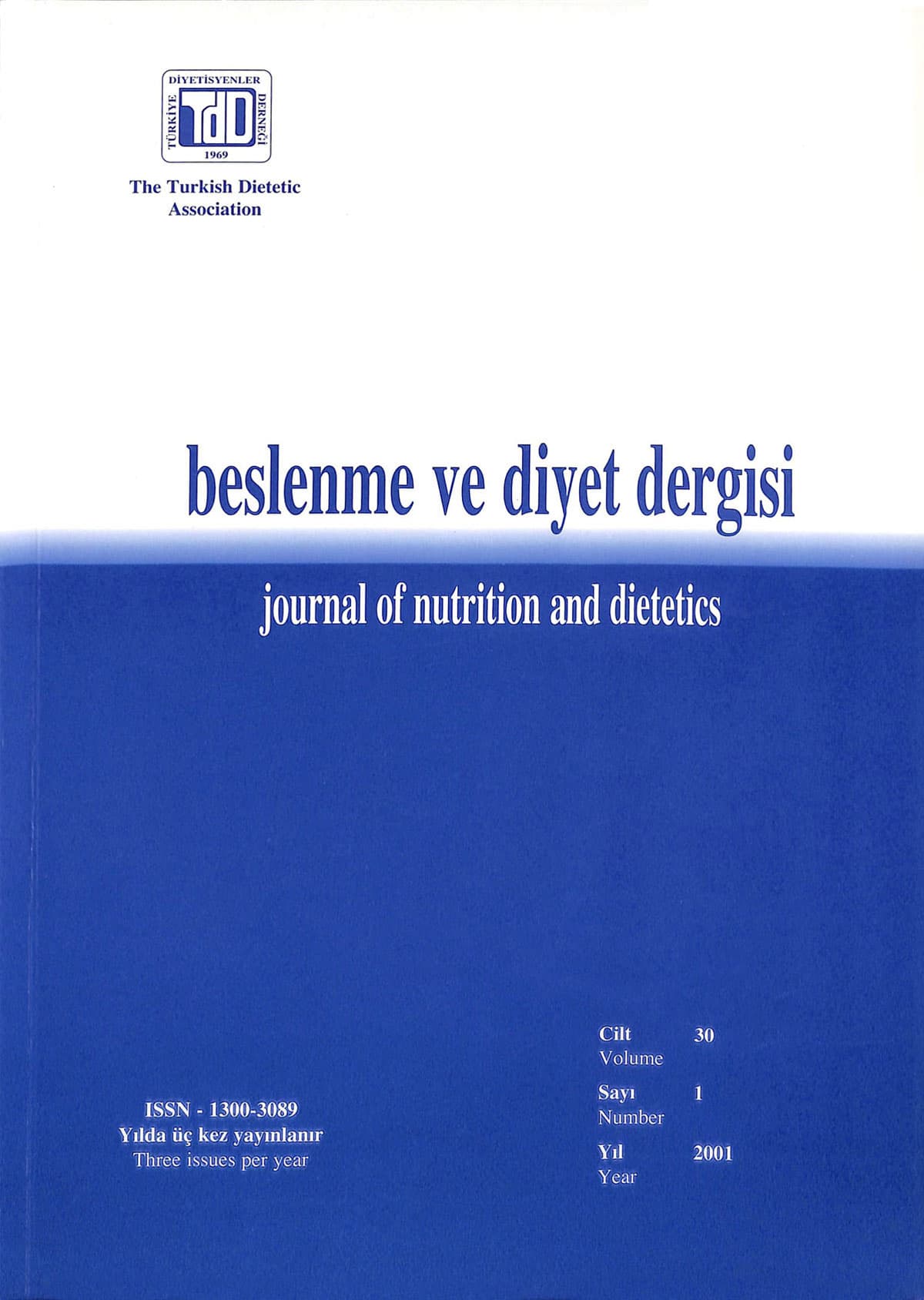Prevalence of lodine Deficiency Disorders, Urinary lodine Excretion and Consumption of Iodized Salt
Keywords:
lodine deficiency, urinary iodine excretion, iodized saltAbstract
This study was condııcted at Ankara, Çubuk Area in Kuruçay and Kışlacık villages, in order to determine the iodine deficiency disorders by examining urinary iodine excretion and also to determine the prevalence of palpable goiter including consumption of iodized salt. For this purpose urine samples were randomly collected from 88 subjects and analysed for urinary iodine excretion. Goiter prevalence ranged in 8-10,6-12, 7-14 and 15-49 age groups as 17.2, 22.1, 20.2 and 38.0 % respectively. Grades 2 and 3, visible goiter rate was 6.2%. The total goiter rate was 31.2%. The consumption o f iodized salt of ioditıe-deficient and iodine-sufficient groups were 12.1% and 6.9%, respectively and the difference between these groups were not found significant (p> 0.05). Total öf 8.5% consume iodized salt. Meaıı urinary iodine excretiotı was 7.7 nıcg/L in iodine- deficient subjects and 11.7 mcg/L in iodine-sufficient groups. The difference was statistıcally significant (p< 0.05). In iodine-defıcient subjects, a correlation \vas found with age (r= -0.308, p< 0.05), waist-hip ratio (r=-0.469, p< 0.05) and urinary iodine excretion. Relation betw’een urinary iodine excretion and goiter grades were significant (p< 0.01). In conclusion the sıırvey area can be identified as a moderate iodine-deficient area accordiııg to WHO criteria. The results of this study suggest the needfor the implementation of an iodized salt and nutrition education program.

